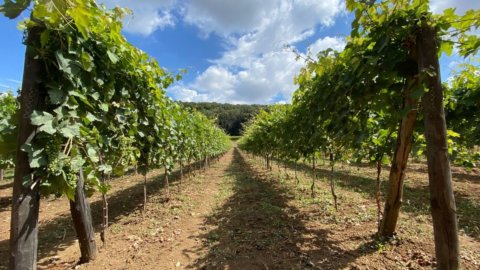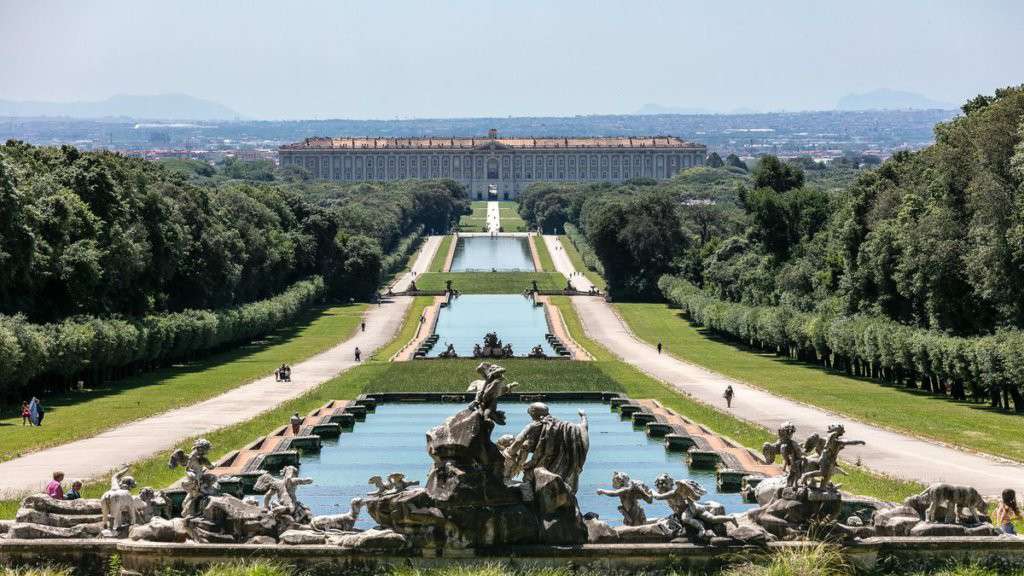Ferdinand IV of Bourbon, the "Lazzarone King" of Naples and the Two Sicilies, a pleasure-loving monarch who preferred open spaces, hunting, fishing, riding in the countryside to the obligations of the court, who loved the pleasures of the table, and mingle with i lazzari speaking in strict Neapolitan dialect, he was a great admirer and consumer. To the point that he had 27 bushels of vines planted in the Royal Palace of Caserta and with an edict he had categorically prevented anyone who had not been expressly authorized from entering that land.
The wine that the King liked so much to the point of being constantly present at the official dinners of the kingdom together with the most highly placed French and Spanish wines, and which was given as a gift to the most illustrious guests visiting the realm of Naples, was called Pallagrello.
In fact, in the geographical dictionary of the Kingdom of Naples, dated 1797, one can read: "The wines of this district are excellent, and are among the best of the Kingdom both for their quality and nature, and for the grateful sensation they arouse on the palate. They go by the name of Pallarelli and are highly esteemed in lunches”.
Originally from the locality "Monticello" in the municipality of Piedimonte Matese (origin attested by an epigraph still affixed in this locality, created at the behest of Ferdinand IV, Pallagrello (in the local dialect, pallarello means "rounded", with reference to the grapes of the bunch, which have a small and round shape) is the name traditionally attributed to two vines (Pallagrello Nero with black grapes, Pallagrello Bianco with white grapes) native to the province of Caserta that some would even trace back to the Roman Pilleolata.
Infestations of powdery mildew e phylloxera of the early years of the twentieth century decreed an inglorious end, Pallagrello remained in the memory of the chronicles and in some peasant fields degraded from noble wine to the humblest function of blending wine.
But in the Vanvitelli palace the wine of the Bourbons returns this year to make its appearance. Three years ago, in fact, the Ministry of Cultural Heritage and Tourism had published a call for tenders for "the assignment for consideration for the restoration, cultivation and management of the ancient Bourbon vineyard". An idea long cultivated by the innovative former director of the Reggia, Mauro Felicori, the one - so to speak - accused by the trade unions of working too much, an attentive supporter of a policy of historical enhancement of the territory through the rebirth and greening of an activity by now lost over time (in the wake of the most modern concept of conservation of cultural heritage), which oenologically had to be expressed through the recovery of white and black varieties of Pallagrello, to obtain quality grapes suitable for the production of IGT wine.
Therefore, full credit must be given to the great scholar if in the Royal Palace of Caserta a wine now brings back the hands of history, bringing us back to the laden tables of the Bourbons because, as he loved to say, the Royal Palace had to revive in all its functions, return to being a living home .
In fact, the tender was won by the Tenuta Fontana company which obtained the concession of one hectare of land planted with vines within the Bosco di San Silvestro, a WWF oasis which is part of the "Reali Delizie" annexed to the Royal Palace of Caserta to re-establish the cultivation of the ancient Bourbon vineyard called "Vigna di San Silvestro" or "Vigna del Re"
In this ambitious, careful and difficult path of rebirth of the Bourbon line, the company has involved two important professionals at a national level, the Florentine oenologist Francesco Bartoletti and the Livornese agronomist Stefano Bartolomei, who used the organic cultivation method capable of safeguarding the environment by favoring the quality of the product.
The restoration of the ancient vineyard, located in the Oasis of San Silvestro behind the waterfall in the Parco della Reggia di Caserta, started from the preliminary study of the soils to choose the most suitable rootstock for the type of soil and the exposures present, continuing with the design and execution of the works and finally arrive at the biological agro-environmental management of the vineyard.
A philosophy that underlies the activity of Tenuta Fontana, a farm for the production, transformation and marketing of quality wines. “We believe – say the owners of the company – that wine is the best product for making a territory and its resources, history and culture, traditions and typical dishes known. May it help to protect and promote the environment, teach to respect nature. We believe that quality begins to be built with respect and care for the land and continues in the cultivation of the grapes and in the harvesting and transformation of the grapes into wine. All this translates into eco-sustainability, respect for tradition, innovation.
This year, therefore, the first harvest will take place. “The forecast – Anna Pina and Antonio Fontana explain – is of a thousand bottles produced. At best, it would already be a great achievement, but our main objective was to revive La Vigna and we have succeeded, we are aware of how important this goal is".
“We will soon see and taste the fruits of the ancient Bourbon vineyard – said the director of the royal palace of Caserta Tiziana Maffei, who took over from Felicori, who carried out the project with great enthusiasm, presenting the initiative in the headquarters of the foreign press. The palace, born as the maximum prestigious representation of the new Kingdom of Charles of Bourbon completed by the forest of San Silvestro, was conceived as part of an articulated territorial production system".
The Royal Palace of Caserta which in 1997 UNESCO included, together with the Carolino Aqueduct and the San Leucio complex, in the list of Italian World Heritage Sites, was built in the mid-eighteenth century by the will of the King of Naples, Charles of Bourbon who wanted to have at his disposal a Royal Palace that could compete with those present in the main European capitals. In particular, the king admired the palace of Versailles.
The task of building this palace was entrusted to the Italian architect Luigi Vanvitelli who however died before completing the project. Carlo Vanvitelli, son of Luigi, and other architects of his school completed the grandiose royal residence which covers an area of about 47.000 square meters for a height of 5 floors and has a rectangular plan. The park of the palace, on the other hand, extends for about 3km in length on 120 hectares of surface.
The immense lands of the Royal Palace of Caserta were not only used to impress the many visitors to the Bourbon court, but also for the production of various products.
Flora and fauna once offered a remarkable variety, so as to push the king to build a hunting estate there. Over the years the structure expanded with a section dedicated to the processing of cheese, honey and, above all, wine. Ferdinand IV, in addition to giving life to the San Leucio silk factories, built the first buffalo farm in the Carditello palace to supply his tables with fine cheeses. With the end of the Kingdom of the Two Sicilies those Royal Delights were abandoned.






